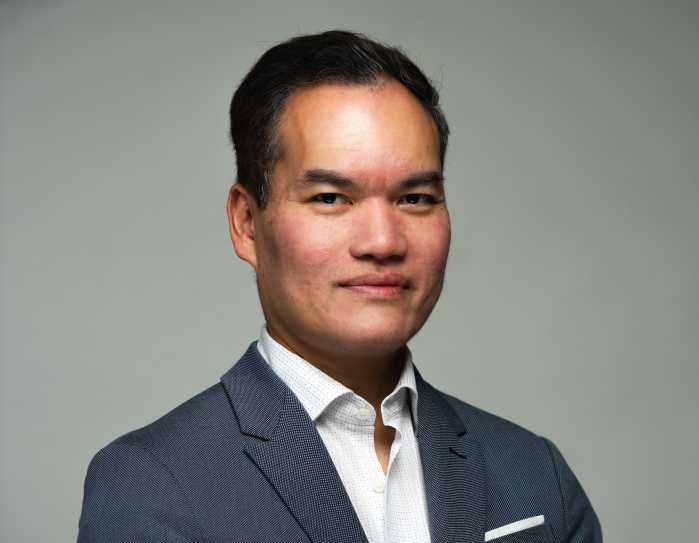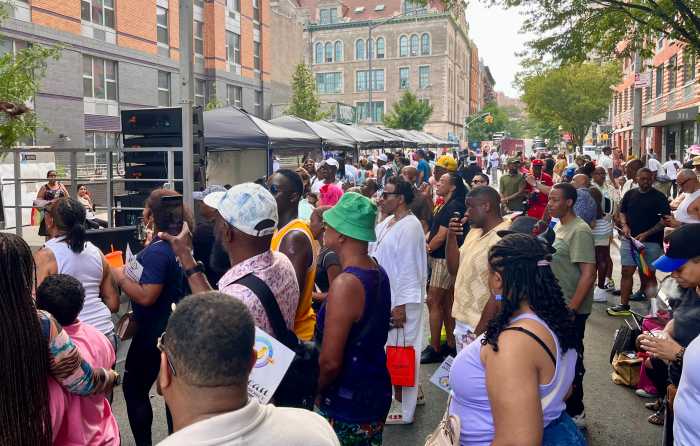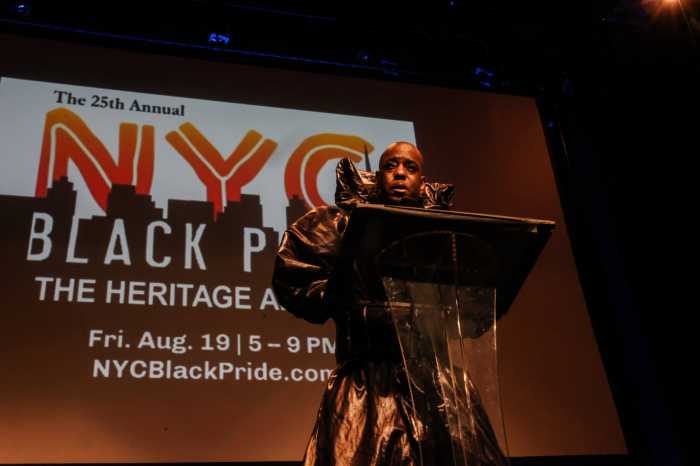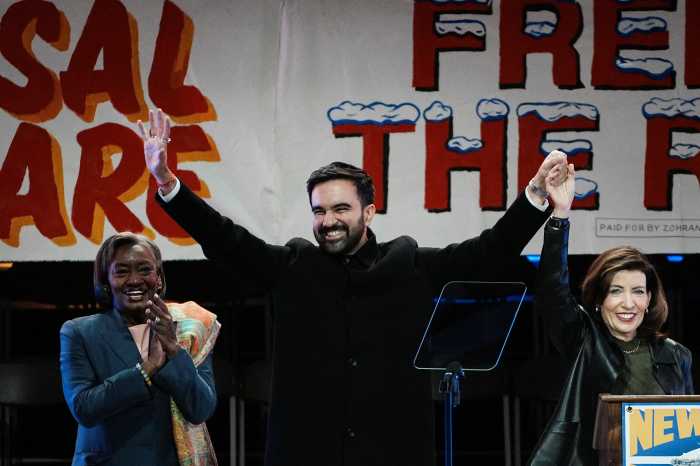Ellen Broidy is more terrified today than she ever was in the aftermath of the Stonewall Riots in New York City.
On the sweltering June morning in 1969, mostly young queers and other LGBTQ individuals had enough when New York City police officers raided the Stonewall Inn in Greenwich Village around 1 a.m. They fought back for six days and nights in what came to be known as the Stonewall Riots.
The riots sparked the movement today, 55 years later, known as Pride, which is a celebration, and in some places, it is a demonstration against homophobia and transphobia around the world.
“I’m scared in ways that I was not stepping out onto Christopher Street in 1969,” Broidy, a 78-year-old lesbian activist, told Gay City News. She’s fearful about the current anti-LGBTQ climate and assaults on other vulnerable communities. She’s concerned about a tight presidential race where President Joe Biden is once again campaigning against former President Donald Trump.
Trump recently became the first United States president to be convicted of felony crimes when he was found guilty on all 34 counts by a New York City jury. He’s made public statements about wanting to be a dictator on the first day if he regains the White House.
Broidy said the “troglodytes” have “already taken away a woman’s right to choose. They’re going after contraception now.”
“We have schools and states all over the country that won’t teach our history, along with not teaching Black history,” she continued. “It’s a terrifying time.”
Red scare
Broidy was young when Wisconsin Senator Joe McCarthy terrorized the nation with the “Red Scare,” accusing people of communism, and the “Lavender Scare,” accusing government workers of homosexuality, from 1950 to 1954.
The late gay rights activist, Frank Kameny, Ph.D., a government astronomer, was one of the thousands of victims who lost their jobs during four years of terror of what came to be known as McCarthyism.
In an unusual move at the time, Kameny fought back. He founded the Mattachine Society of Washington, DC; organized a demonstration in front of the White House in 1965; and launched legal challenges against the US government until anti-gay policies were changed.
One of the first gay rights organizations, The Mattachine Society, was founded by gay activists Harry Hay, Bob Hull, Chuck Rowland, Dale Jennings, Konrad Stevens, James Gruber, and Rudi Gernreich in Los Angeles in 1950. The Mattachine Society had chapters throughout the US. Its cohort, The Daughters of Bilitis, was founded by lesbian couple and activists Phyllis Lyon and Del Martin in San Francisco in 1955. In 1952, Christine Jorgensen made a media splash as the first openly transgender woman in the US.
These early pioneers brought visibility and LGBTQ organizations formed ways gay men and lesbians could discuss causes in the queer community in private social settings. They also created publications, such as the Daughters of Bilitis’ The Ladder, one of the first lesbian magazines.
At the same time, Kameny demonstrated in DC and Philadelphia gay and lesbian activists held an Annual Reminder Day, a protest for the same civil rights as straight people, in front of Independence Hall every July 4 from 1965 to 1969.
Kameny’s and the Annual Reminder Day marches were different from Stonewall and other similar riots that happened, like Los Angeles’s Cooper Donuts Riot in 1958, Milwaukee’s Black Night Brawl in 1961, San Francisco’s Compton Cafeteria Riot in 1966, and Philadelphia’s sit-in at Dewey’s restaurant in 1965. Kameny’s demonstration and Reminder Days were peaceful and buttoned down and dressed up to show straight people queer people were not sick or perverted. They wanted respect and were just like them.
Personal is political
Broidy came of age at a time when her parents took her to civil rights marches. By the time she was in her teens toward the mid-to-late 1960s, the civil rights, women’s rights, and anti-war movements were in full swing. She joined the Anti-War Movement, demonstrating against the Vietnam War.
In 1967, her politics became more personal. She entered New York University and co-founded the college’s first LGBTQ organization, the Student Homophile League.
In 1969, the young lesbian activist and budding academic was enjoying a summer getaway to Fire Island, a popular LGBTQ hotspot on a thin barrier island off the southern shore of Long Island, New York. She rented a house with her then partner, Linda Rhodes, and veteran lesbian activists Barbara Gittings, Kay Lahusen, Ros Regelson, and Elenore Lester the weekend that the Stonewall Riots broke out. News of the riots spread fast as phones rang on the remote island.
“Everybody on the ferry back to Long Island knew something had happened,” Broidy said. Most of the passengers on the boat were hungover, but they were also buzzed by the news about Stonewall by the end of the weekend.
Even through the party haze, it “felt very different,” Broidy said, stating it was a mixture of astonishment and excitement. “It was palpable.”
Spark to wildfire
Many LGBTQ activists came out of the anti-war, civil rights, and feminist movements, Broidy said.
On July 9 of that year, the Mattachine Society of New York held a meeting to discuss the events of Stonewall. As previously reported by Gay City News, lesbian activist Martha Shelley was in a group that was asked to organize a demonstration to harness the energy of the uprising, and that group created the Gay Liberation Front — an early LGBTQ rights group. The Gay Liberation Front drew inspiration from the National Liberation Front of North Vietnam for its name. The group was a non-hierarchical and intersectional organization.
Shelley organized a march that took place that July with an estimated 400 people who made their way down Fifth Avenue to Washington Square Park to remember the uprising, according to police reports made at the time.
Broidy also worked for the Oscar Wilde Memorial Bookstore, an LGBTQ bookstore owned by gay activist Craig Rodwell. It was at a dinner at Rodwell’s home on the eve of the Eastern Regional Conference of Homophile Organizations in Philadelphia in November 1969 that the proposal was made for New York City’s first Pride event.
Rodwell, his then partner, gay activist Fred Sargent, Broidy, and Rhodes talked about what was happening in the community and how to maintain the momentum from Stonewall. The foursome came up with a proposal. Broidy, who was an “official delegate” for the conference representing New York University’s Student Homophile League, was chosen to present the proposal to the conference.
“We built more on the march that Martha had, but we use the Philadelphia demonstration, the Annual Reminder, as a hook, as a jumping off place,” Broidy said about the Gay Liberation Front’s planning strategy for the first-ever Christopher Street Liberation Day March June 28, 1970. The march later became NYC Pride.
Rodwell and Sargeant are credited with being the primary organizers of the 1970 march. Broidy, Michael Brown, Marty Nixon, Marty Robinson, and Foster Gunnison, who was not a radical, also contributed, reported Gay City News.
The first march drew an estimated 5,000 marchers out onto the streets of New York City in 1970. Marchers walked the 3-mile journey from Greenwich Village to Central Park’s Sheep’s Meadow.
“It was absolutely extraordinary,” said Broidy. “It was different than anything else that had ever happened, the same way that Stonewall was.”
In an interview for “Stonewall, Paving the Way to Gay Pride,” a documentary about Stonewall directed by Mathilde Fassin, Broidy said, “I never would have admitted it to myself at that moment, I was terrified.”
“We had no idea what would happen,” she continued. “But we hit the streets, and all of those fears absolutely disappeared. It was, in fact, one of the most life-affirming moments I ever had.”
Similar marches were held in each of the Gay Liberation Front cities that eventually grew into Pride celebrated around the world.
“Stonewall was the spark, and the Gay Liberation Front was the flame,” said Broidy, who currently serves as secretary of the board of directors of the Gay Liberation Front Foundation. “It was the right moment. We had come far enough away from the ‘50s, I think, to allow for the actions that happened post-Stonewall.”
“We weren’t so afraid of being called ‘commie pinko queers,’ which we all were anyway,” she added.
Stonewall Riots and the rise of the Gay Liberation Front denoted a clear shift in LGBTQ rights from asking to be accepted to actively creating acceptance.
The Gay Liberation Front quickly started splintering its first year, with new organizations such as Radicalesbians, which was co-founded by Broidy. Radicalesbian members, including Broidy, participated in the “lavender menace” zap on the National Organization for Women’s Second Congress to Unite Women in New York City in May 1970, reported the Bay Area Reporter.
Terrifying times
However, 55 years after the Stonewall Riots, Broidy said the LGBTQ community is living in “terrifying” times.
“It’s a very rough time we’re going through now,” she said.
Broidy sees the hard-won rights during the last 55 years could be “taken away in a heartbeat.”
“We have to protect what we’ve got. We fought like hell to get what we’ve got, and it’s crushing to think that it could so easily be taken away,” she continued.
Her encouraging words to today’s LGBTQ activists are, “Don’t give up. Don’t lose heart. Keep fighting. Don’t compromise.”
“[Right-wing conservatives] don’t have our best interests at heart,” she continued. Broidy is encouraging young queer and gender-nonconforming activists to reach out to LGBTQ elders for inspiration and acknowledge the shoulders they stand on. Not respecting the LGBTQ activists of the 1950s who laid the groundwork for the Stonewall generation is one of Broidy’s greatest regrets, she said.
Broidy left New York City for the West Coast for graduate school. Now retired, she went on to teach women’s studies and history and served as a librarian at UC Irvine and UCLA. She also was a writing specialist for a special minority Scholars Program at UC Santa Barbara.



































